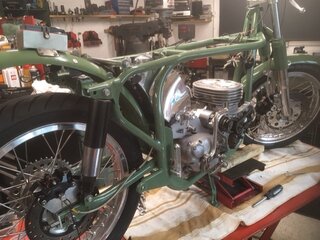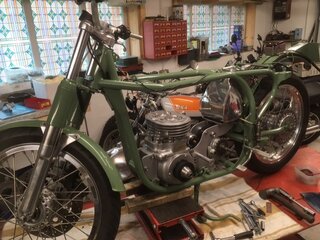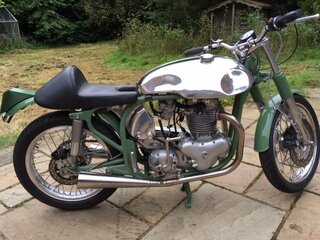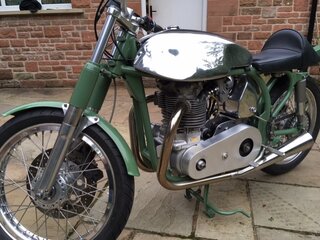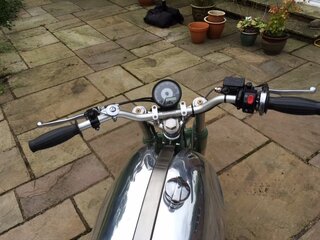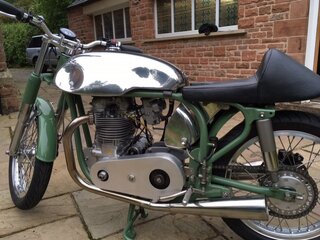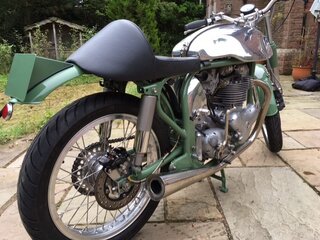Matchless
VIP MEMBER
- Joined
- Dec 23, 2010
- Messages
- 1,122
This is my Atlas which I bought a couple of years ago. It came back from the US in a bit of a state. As I have a very original 650ss I decided to build this as a Domiracer style bike, so first off I did a rough build adding brackets & parts to get it up & running. Once I was happy that I wouldn't need to weld any more bracketry I stripped it down for the shiney shiney treatment. As I have always loved the look of the Francis Beart racers I opted for Ludlow green cycle parts, which combined with the polished ally tanks looks rather nice.
The engine has a Maney crank & barrels, JS super light rods & HC pistons, & a PW3 cam. I have a stage 1 Maney head which I may or may not fit, undecided on that, & may just fit the Atlas head as I feel it will give better performance for road use. The gearbox has a RGM CR gear set which works well on a light weight solo bike. When I have a bit more cash to hand I'll give Maxton a call to sort the suspension.
More pics to follow when it's a little more together.
The engine has a Maney crank & barrels, JS super light rods & HC pistons, & a PW3 cam. I have a stage 1 Maney head which I may or may not fit, undecided on that, & may just fit the Atlas head as I feel it will give better performance for road use. The gearbox has a RGM CR gear set which works well on a light weight solo bike. When I have a bit more cash to hand I'll give Maxton a call to sort the suspension.
More pics to follow when it's a little more together.

